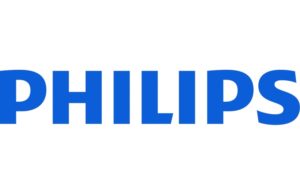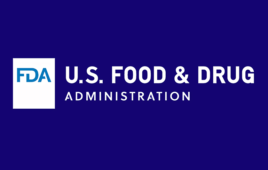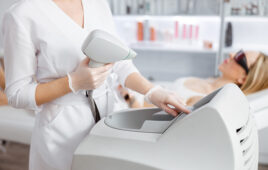 The FDA said it observed potential violations of federal medical device safety rules when inspecting a Philips Respironics manufacturing facility connected to the Class I recall of more than 15 million respiratory devices.
The FDA said it observed potential violations of federal medical device safety rules when inspecting a Philips Respironics manufacturing facility connected to the Class I recall of more than 15 million respiratory devices.
The FDA recently requested additional safety testing on replacement materials and issued a Form 483. The form details how Philips and its foam supplier were aware for years that polyester-based polyurethane (PE-PUR) sound abatement foam could break down and potentially enter a device’s air pathway, causing health problems for users.
In the Form 483, FDA alerted management at the Royal Philips (NYSE:PHG) subsidiary of conditions that the inspector considered possible violations of the U.S. Food, Drug and Cosmetic Act or related regulations. The post-inspection report is not a determination of wrongdoing and will be considered by the FDA along with any evidence or documents collected from the facility and responses offered by Philips. (Learn more about Form 483 reports from the FDA.)
“We will work closely with the FDA to clarify and follow up on the inspectional findings and its recent requests related to comprehensive testing,” Royal Philips CEO Frans van Houten said in a news release on Sunday. “Until we have concluded these discussions, we are not able to publicly provide further details on these responses.”
The FDA redacted parts of the 28-page report, citing a public records law exemption to protect trade secrets and confidential commercial or financial information.
The redactions do not obscure the inspector’s concerns. They include: deficient procedures for corrective and preventative action, failed design validation, inadequate design change procedures, reporting deficiencies (the failure to report in writing to the FDA a correction or removal conducted to reduce a risk to health posed by a device), inadequate procedures to ensure products and services conform to specific requirements, and failure to evaluate and select potential consultants based on their ability to meet specific requirements.
The first 13 pages detail the inspector’s observation of inadequate risk analysis. The report says Philps Respironics launched no investigation, health hazard evaluation, risk analysis or design review when it learned another Philips entity implemented a preventative maintenance servicing procedure on Trilogy ventilator products in 2015 following issues with foam degradation.
The inspector found at least 14 instances from April 2016 to January 2021 where the company “was aware of issues and concerns related to potential foam degradation and/or Volatile Organic Compound (VOC) emissions with various Sleep and Respiratory care devices.”
Testing showed the foam used in Trilogy devices was susceptible to degradation when exposed to high humidity and temperature. In 2019, a DreamStation 1 CPAP vice failed VOC tests due to excessive formaldehyde emissions. In 2020, a biological risk assessment following complaints of degraded foam in SystemOne ventilators warned that “the biological and toxicological risks from exposure to degraded PE-PUR foam are of concern and the severity of harm is crucial with respect to both the 30 kg and 70 kg patient populations.”
Despite these and other warnings, the FDA inspector said Philips Respironics made no further design changes, corrective actions or field corrections within an appropriate time frame, if at all.
Another device not covered by the recall, an A Series CPAP containing the silicone-based foam that Philips is using to repair recalled devices, failed a VOC test in August 2021. A Philips report warned that pediatric patients would potentially be exposed to higher concentrations of compounds of concern (due to carcinogenic/mutagenic properties). The FDA, however, redacted the number and kind of chemicals that were identified and confirmed. The FDA said Philips did not document any health hazard evaluation, risk analysis or design review following the failed test, leading the FDA to request Philips hire an independent lab to study the safety of the replacement foam.
The FDA said a review of Philips consumer complaints dating back to 2008 included more than 222,000 complaints with terms related to the recall, such as contaminants, particles, foam, debris, airway, particular, airpath and black. More than 20,000 of the complaints involved Trilogy devices between 2008 and 2017.
“Potential foam degradation in Trilogy ventilator devices is not an isolated incident, and you also have not documented a detailed rationale for why harm is not likely to occur again, as required by your Health Hazard Evaluation’s instructions,” the FDA report told Philips.
The FDA found emails between Philips and its raw foam supplier that showed Philips was made aware of foam degradation issues in October 2015, issues that the unidentified supplier confirmed in 2016.
Philips Respironics acknowledged receiving “limited complaints related to foam degradation [in the years prior to 2021], which were evaluated and addressed on a case-by-case basis. Issues relating to VOCs started to surface more recently, with testing and interpretation subsequently taking place with certified third-party experts, leading to the actions in the first half of 2021.”
Philips launched the recall on June 14. The FDA inspected the Murrysville, Pennsylvania Philips Respironics facility on 21 separate days from Aug. 26 through Nov. 9.
Madris Kinard, a former FDA public health analyst with expertise in post-market surveillance, said she had been following the adverse event reports for the Philips devices and reviewed the Form 483.
“It seems they were quite slow to take action. … This recall was far overdue, in my opinion, even with the concern that there might be a shortage of CPAPs available on the market if a recall had been initiated,” she said. “There are actions a company can take, with the help of the FDA, to help mitigate concerns like this. It doesn’t appear that the company worked with the FDA in any kind of collaborative fashion, to make a good faith effort to inform consumers 2-3 years ago when they knew of the issues.”
In October, Philips said it made approximately 750,000 repair kits and replacement devices, of which at least 250,000 reached customers. This week, the company said it did not expect the FDA’s request for more testing to delay the repair-and-replace campaign, with testing expected to occur by December.
The FDA is not recommending patients stop using devices that have been through the repair-and-replace program. The FDA said it will share test results as soon as they are available. More information is available for patients here and here.
Devices involved in the Philips recall include:
- Continuous non-life-supporting ventilator devices including the DreamStation ASV, DreamStation ST, AVAPS, SystemOne ASV4, C-Series ASV, C-Series S/T and AVAPS, OmniLab Advanced+
- In-facility continuous ventilator devices including the Philips Respironics E30 with humidifier
- Noncontinuous ventilators including the SystemOne (Q-Series), DreamStation, DreamStation Go, Dorma 400, Dorma 500, and REMstar SE Auto)
- Mechanical ventilation devices including the Trilogy 100, Trilogy 200, Garbin Plus, Aeris, LifeVent 200, BiPAP V30, BiPAP A30/Hybrid/A40



